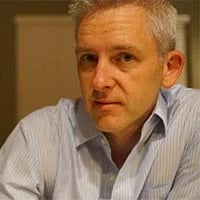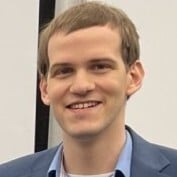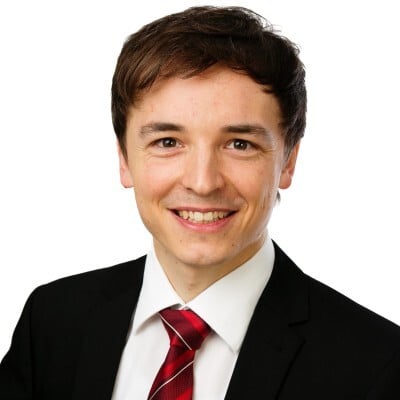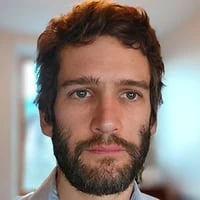Ask the Expert
The best way to learn the latest CT techniques and how to apply them to your work is to talk to experts. Join us to meet experts in various CT fields.
Deep Learning Image Segmentation - Practical Knowhow
Do you know how to use deep learning image segmentation to maximize its benefit? Are you using it the right way?
The guest expert, Dr. Mike Marsh (Dragonfly Product Manager from Object Research Systems), will answer our questions about how to use deep learning the right way and get the most out of it.
About the guest expert
Dr. Marsh earned his Ph.D. in Structural and Computational Biology from Baylor College of Medicine. He has worked in imaging technology and solutions, with an emphasis on 3D visualization and analysis, for over 20 years. His academic training was in biological sciences, but he has been tasked to develop other areas of expertise for commercial development, including materials sciences and geosciences. This expertise has led to contributed book chapters, review articles or invited talks spanning these multiple disciplines. His scientific imaging and image processing covers X-ray CT, TEM, SEM and SEM-related microanalysis. For the last seven years, Dr Marsh has worked as the Dragonfly Product Manager at Object Research Systems.
Advancing Drug Development with High-resolution X-ray CT - Transformation of Decision Making with Digital Assets
Did you know you can quantify critical quality attributes from CT images? You can even simulate drug release using CT imaging data.
The guest expert, Joshua Lomeo (Director of Application Science from DigiM Solution), will answer our questions about how you can advance pharmaceutical product development with CT analyses.
About the guest expert
Joshua Lomeo earned his B.S. in chemistry from the University of Rochester, where his focus was on the synthesis and characterization of nanomaterials. Since joining DigiM in 2019, Josh has served as a project manager, providing critical support to pharmaceutical scientists through the lens of microstructure analysis. Working with clients, he has frequently published shared research in top ranking pharmaceutical journals. In his current role, he supports DigiM’s marketing and business development through the integration of their solutions with common pharmaceutical development challenges.
Digital Rock Physics – When and How to Use It
Did you know Digital Rock Physics (DRP) can supplement and sometimes replace the expensive and time-consuming experiments required to guide the development and production of oil and gas reservoirs? You can save lots of time and money by applying DRP where applicable.
The guest expert, Dr. Arne Jacob (Application Engineer specialized in DRP from Math2Market), will answer our questions about how you can use DRP and apply the results to decision-making processes involved in oil and gas reservoir development and production.
About the guest expert
Dr. Arne Jacob studied Geosciences at the Johannes Gutenberg-University Mainz, where he completed his PhD in 2021. During this time, he was responsible for interdisciplinary research projects for the measurement and evaluation of rock samples by x-ray and synchrotron computed tomography, as well as for the digital evaluation of FIB-SEM measurements. He developed digital methods for the determination of representative elementary volume and for the evaluation of the influence of clay minerals on permeability and porosity in reservoir rocks. He contributed to numerous publications on digital rock physics and served as a reviewer for specialized journals. He is currently employed as an application engineer at Math2Market GmbH, where he uses his expert knowledge to work on the further development of the GeoDict software.
Filtration Simulation – How to Make the R&D Cycle More Efficient
Did you know we can simulate flow through filtration materials to analyze filter efficiency, filter clogging, and lifetime?
The guest expert, Dr. Philipp Eichheimer (Application Engineer specialized in filtration from Math2Market), will answer our questions about how using CT can make the research and development process of filter materials more efficient by running simulations to identify effective filter characteristics.
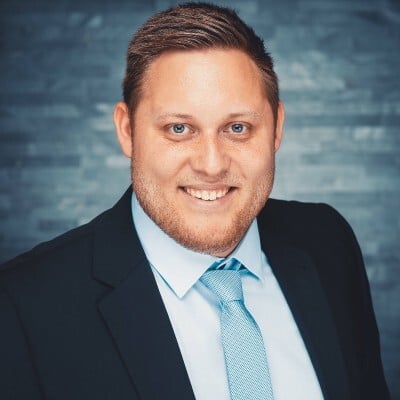
About the guest expert
Dr. Philipp Eichheimer received his Bachelor's and Master's of Geoscience at the Johannes-Gutenberg University of Mainz, specializing in Computational Fluid Dynamics and Structural Analysis using FEM and FD approaches. Afterward, he received his doctorate title in Computational Geophysics from the University of Bayreuth, Germany, on the topic of fluid flow of non-Newtonian fluids on the micro-scale. In the framework of his doctoral thesis, he spent a research semester at the University of Tohoku in Sendai, Japan, to work on µCT-imaging techniques as well as investigate and measure the permeability of rocks and regular glass bead samples experimentally. Since October 2020, he has worked as an application engineer and business manager in the field of filtration at Math2Market.
Designing CT Image Analysis for Your Research – What to Quantify
Many tools are available today to segment CT images and conduct quantitative analyses. But how would we know what to quantify? What should we do when the software offers twenty different parameters to choose from?
The guest expert, Prof. Chandra Reedy from the University of Delaware, will answer our questions about how she chooses what to quantify using the CT images to extract meaningful and trustworthy information about ancient ceramics.
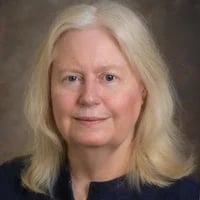
About the guest expert
Chandra serves as a Professor in the Joseph R. Biden, Jr. School of Public Policy & Administration, and as Director of its Center for Historic Architecture & Design (CHAD). She also maintains the Laboratory for Analysis of Cultural Materials in CHAD. She holds a joint appointment in the Department of Art History and is an affiliated faculty member in the Anthropology Department, Asian Studies Program, Center for Global and Area Studies, and Winterthur Program in American Material Culture. Her main interests lie in the preservation of traditional technologies and their associated materials and intangible cultural heritage. She likes to combine ethnographic fieldwork with laboratory analysis. Most of her fieldwork has been done in Asia, most recently in China (primarily in Sichuan Province); her laboratory analyses focus especially on various microscopy and image analysis techniques for ceramic materials.
Voxels to Mesh Data to Simulation – How to Use CT for Metrology and Simulations
Did you know that the simple ISO-50 surface detection technique often does not provide the accuracy required for metrology applications?
The guest expert, Roger Wende (Senior Business Development Manager from Hexagon), will answer our questions about how exactly the object surface is identified in CT data, how to represent the results as mesh data, and what type of advanced analyses and simulations we can run using them.
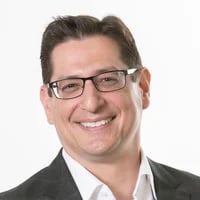
About the guest expert
Roger Wende is a Business Development Manager for Hexagon with a focus in visualization and analysis of industrial computed tomography (CT) under the Volume Graphics umbrella. He received his B.S. in Electrical Engineering at SMU in Dallas, TX and has spent the past 27 years in the NDT market. A fun fact about Roger: He helped NASA reduce the size and weight of their toilet by half for the shuttle program in the late 90s using ultrasonic hardware.
Virtual Tomography – Optimizing Data Acquisition Parameters Without a CT Scanner
Did you know you can simulate radiographs and CT images based on the sample structure and CT scanner properties, such as the type of X-ray source and detector? This type of simulation can help you test and optimize data acquisition parameters without running actual scans and can save you time when you have limited machine time.
The guest expert, Dr. Awen Autret (R&D Engineer from NOVITOM), will answer our questions about how you can simulate X-ray images and where this technology can be useful.
About the guest expert
Awen Autret obtained his PhD by conducting research in positron emission tomography image reconstruction at the Telecom Bretagne engineering school after receiving an engineering degree in image processing from Telecom Physique Strasbourg. Since 2016 he has been working as an R&D engineer for Novitom, a service company leader in advanced imaging technics, as synchrotron micro-tomography, for 3D material characterization or non-destructive analysis. His work at Novitom mainly focuses on developing new tools for the analysis of X-ray micro-CT images, in-house tomography reconstruction, and Novi-Sim, simulation software for X-Ray phase contrast tomography as well as laboratory tomography.
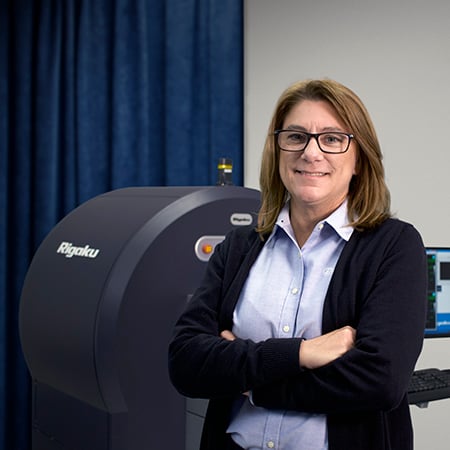
Contact Us
Whether you're interested in getting a quote, want a demo, need technical support, or simply have a question, we're here to help.
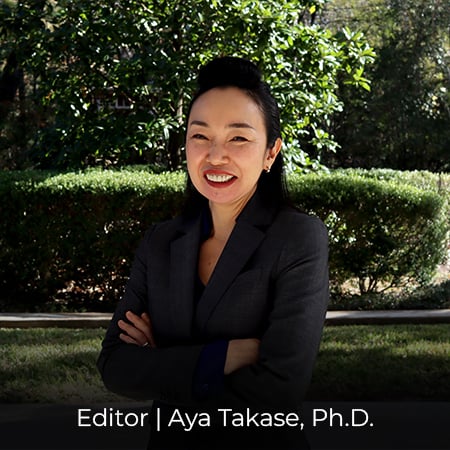
Subscribe to the X-ray CT Email Updates newsletter
Stay up to date with CT news and upcoming events and never miss an opportunity to learn new analysis techniques and improve your skills.


